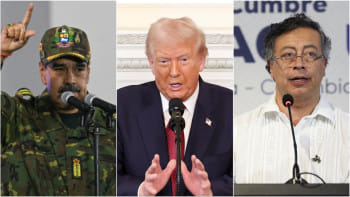Before COP29, let’s get our priorities in line

In about seven months, the next climate conference will take place in Baku, Azerbaijan, and I believe there are two areas that Bangladesh needs to focus on in particular.
Accessing the L&D Fund
One of the significant developments in recent climate negotiations has been the new Loss and Damage (L&D) Fund. While it is obvious that Bangladesh is a climate-vulnerable country, to get money from the L&D Fund, we need to prove that the losses and damages we face are due to climate change. Here, attribution science can help us. By using climate models, we can show that events like torrential rainfall, floods, cyclones, and heatwaves are now happening more severely and frequently in Bangladesh due to an increase in global temperature.
Once that link is made, the next question is: are we doing enough to protect ourselves from those calamities? Of course, we are taking adaptation measures. Bangladesh has a long history of doing so. But there are two problems with adaptation action, the first is known as adaptation gap.
In November 2023, the United Nations Environment Programme (UNEP) published the Adaptation Gap Report which clearly showed that there is a significant gap between planning, funding, and implementing adaptation measures that the world desperately should have and what we have. This is also true for Bangladesh, which has an annual funding gap of $6 billion.
The other problem is adaptation limits. Adaptation may show limitations for two reasons: i) our adaptation options are useless against certain unbearable climate risks, and ii) some options might be made available in the future through technological advances, but unfortunately we don't yet have them at our disposal. These weaknesses around adaptation lead to climate change-induced loss and damage.
So, to get the new L&D Fund, we need to gather evidence of such losses and damages. Bangladesh already has some studies on this and more are ongoing, but it's still not enough. Moreover, while doing research, researchers should remember that along with economic loss and damage, we also need to estimate the non-economic ones (such as to social cohesion, traditional knowledge, cultural heritage, mental health, and agro-biodiversity). Consequently, government agencies, NGOs, the private sector, and academics need to collaborate to gather more evidence on which L&D actions will be effective in preventing, minimise, and addressing loss and damage so that we can propose those good practices in our project proposals to the L&D Fund. Such actions may include better climate information and early warning systems, taking anticipatory actions with prearranged funds to respond before an extreme event hits us, having index-based insurance to cover damages, shifting vulnerable communities to safer locations, and undertaking recovery and reconstruction after an event.
While we wait for the L&D Fund to be available, the finance division could work with the environment ministry and the disaster management ministry to redefine the Comprehensive Disaster Management category as the Loss and Damage category in the climate-relevant budget of 2024-2025. This will help us align our focus with the ground reality and get ready for an era of loss and damage.
Revising our NDCs
During COP28, the first global stocktake was completed to check the progress in reducing greenhouse gas (GHG) emissions. This was done considering countries' promises made by submitting the Nationally Determined Contributions (NDCs) in 2020-2021 to the UNFCCC. And the progress isn't good. Now, to stop the global temperature rise at the 1.5 degrees Celsius level, the world should cut 43 percent of 2019's emissions by 2030, 60 percent of it by 2035, and achieve net zero by 2050—a few very big asks, indeed. Therefore, the updated NDCs 3.0 (the third generation NDCs), due by early 2025, have to be the most ambitious mitigation document ever.
To meet the deadline, Bangladesh's environment ministry should immediately start the process of updating Bangladesh's NDCs from 2021. As done for the recent Bangladesh National Conservation Strategy, the NDCs' revision should be done using our own funds. During this revision, the country's new development philosophy, "from resilience to prosperity," should be kept in mind as outlined in the Mujib Climate Prosperity Plan—which also envisages a just and equitable energy transition. Building on the rich experience of the National Adaptation Plan (NAP) formulation during 2021-2022, the environment ministry should ensure that the NDC revision is an inclusive process. We should set out new NDC targets after listening to the workers of fossil fuel-driven sectors and other marginalised groups whose health, livelihoods, and social protection are being affected by climate change and a transition to a renewable energy future.
In response to the recent COP decisions, updated NDCs should also include a coal-based power plant phase-out plan in light of the current power generation and distribution situation in Bangladesh and the rapidly evolving energy diplomacy in South Asia. Co-creation of NDCs 3.0 with concerned stakeholders will be one step forward to effectively and inclusively implementing the revised NDCs by 2030.
Dr Haseeb Md Irfanullah is an independent consultant working on environment, climate change, and research systems; and a visiting research fellow at the University of Liberal Arts Bangladesh (ULAB). Reach him at [email protected].
Views expressed in this article are the author's own.
Follow The Daily Star Opinion on Facebook for the latest opinions, commentaries and analyses by experts and professionals. To contribute your article or letter to The Daily Star Opinion, see our guidelines for submission.

 For all latest news, follow The Daily Star's Google News channel.
For all latest news, follow The Daily Star's Google News channel. 











Comments